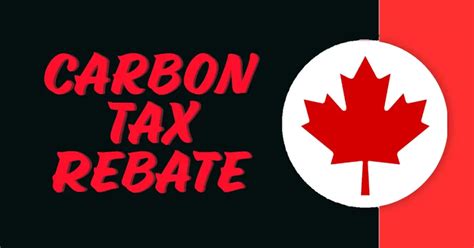Understanding Carbon Tax: How It Works and Its Impact on the Economy
In recent years, the issue of climate change has become increasingly critical. One proposed solution to address this issue is the implementation of a carbon tax. This article aims to clarify what a carbon tax is, how it works, and its potential impacts on the economy.
What is Carbon Tax?
A carbon tax is a financial charge placed on companies or entities that emit carbon dioxide (CO2) and other greenhouse gases into the atmosphere. The objective is to encourage businesses to reduce their carbon footprints by making polluting more expensive. The idea is grounded in the principle that if a company must pay for its emissions, it will seek more environmentally friendly practices to cut costs.
How Does a Carbon Tax Work?
The mechanism of a carbon tax is fairly straightforward. Governments set a price for each ton of CO2 emitted. This price can vary by region or country. Generally, the tax can be applied at different points in the supply chain, such as when fossil fuels are extracted, processed, or burned.
For example, if a carbon tax is set at $50 per ton of CO2 and a factory emits 1,000 tons of CO2 annually, it would be required to pay $50,000 in carbon taxes. This provides a direct financial incentive for the factory to invest in cleaner technologies or improve efficiency to lower emissions and thereby reduce tax liabilities.
The Rationale Behind Carbon Tax
Environmental economists argue that a carbon tax serves two important functions:
- Internalizing External Costs: Emissions from fossil fuels contribute to climate change, which leads to various external costs not reflected in market prices. A carbon tax aims to internalize these costs, making the price of fossil fuels more reflective of their environmental impact.
- Encouraging Technological Innovation: By imposing a tax on carbon emissions, governments can incentivize companies to invest in research and development of green technologies, such as renewable energy sources, energy-efficient processes, and carbon capture and storage technologies.
Economic Impacts of Carbon Tax
While the environmental benefits of a carbon tax are often highlighted, its economic impacts can be complex and multifaceted. Below are some potential effects:
1. Cost to Consumers
A direct consequence of imposing a carbon tax is the increased cost faced by consumers. As companies incur additional costs from the tax, these expenses often translate into higher prices for goods and services. For instance, energy costs might rise, affecting households and businesses alike.
2. Job Market Dynamics
The transition to a low-carbon economy may lead to job displacement in certain sectors, particularly fossil fuel industries. However, proponents argue that the carbon tax can also stimulate job creation in renewable energy and energy efficiency sectors. The net impact on employment will likely depend on the specific industry dynamics and the pace of transition.
3. Revenue Generation for Governments
A carbon tax can be a significant source of revenue for governments. This revenue can be utilized for various purposes, such as funding public transportation, renewable energy programs, and climate adaptation initiatives. Policymakers must decide how to allocate this revenue, as it can have a substantial influence on public perception and political support for the tax.
4. Encouraging Behavioral Change
One of the key goals of a carbon tax is to promote behavioral changes both at the corporate and individual levels. By boosting the costs associated with carbon emissions, consumers may be incentivized to adopt lower-carbon lifestyles, such as driving less or investing in energy-efficient appliances.
Conclusion
The implementation of a carbon tax represents a significant step toward addressing climate change by incentivizing the reduction of greenhouse gas emissions. While the economic impacts can be contentious and multifaceted, the long-term benefits in terms of environmental sustainability and innovation may outweigh the immediate costs. Policymakers must carefully consider how to design and implement a carbon tax, ensuring that it achieves its intended purpose without unduly burdening households and businesses.
FAQs
Q1: Who pays the carbon tax?
A: Generally, the carbon tax is paid by businesses that emit carbon dioxide. However, the costs may be passed on to consumers in the form of higher prices for goods and services.
Q2: How does a carbon tax differ from cap-and-trade systems?
A: A carbon tax imposes a direct cost on emissions, while cap-and-trade systems set a limit on total emissions and allow companies to buy and sell emissions allowances. Both aim to reduce greenhouse gases but use different mechanisms.
Q3: Can a carbon tax lead to a significant reduction in greenhouse gas emissions?
A: Yes, numerous studies suggest that properly implemented carbon taxes can result in noticeable decreases in emissions by motivating businesses and consumers to adopt cleaner practices.
Q4: Are there any countries that have successfully implemented a carbon tax?
A: Yes, Sweden, Canada, and the United Kingdom are examples of countries that have successfully implemented carbon taxes, experiencing both reductions in emissions and economic growth.
Q5: What is the future of carbon taxes?
A: As climate change continues to be a pressing global issue, it is likely that more countries will consider implementing or expanding carbon tax systems as part of their overall climate strategies.
This HTML format presents a comprehensive overview of the carbon tax, its mechanics, implications for the economy, and provides a helpful FAQ section to address common questions.
Download Carbon Tax And Rebate
